Keep checking back with us! We add new training opportunities every two months.
NYS MOLST Training
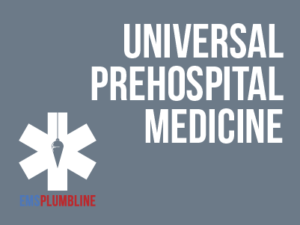
Course Description
The New York State Medical Orders for Life Sustaining Treatment (MOLST) form contains medical orders that EMS must honor in critically ill and frail patients. In order to honor patient wishes at the end of life, it is essential that EMS clinicians are able to rapidly interpret MOLST forms and honor the orders. In 2023, DOH policy was updated to align with an updated MOLST form and to allow the recognition of health care agents by EMS without online medical oversight. This training reviews the legal roles of health care agents, discusses the purpose of the MOLST form, how to interpret orders and reviews five scenarios that will give you the confidence to interpret and honor MOLST orders when it matters most.
Take Lesson Now
Communicating with the Deaf Sign Language User

Course Description
This training was developed by Dr. Jason Rotoli, Deaf Health Pathways Director, University of Rochester School of Medicine and Dentistry in conjunction with Dr. Jeremy Cushman, Chief of the University of Rochester’s Division of Prehospital Medicine. Funding for the Care of the Culturally Deaf education was provided by Society of Academic Emergency Medicine. Continuing Education provided by EMSPlumbline
Final Exam: This multiple-choice exam is designed to test your knowledge of the material you just reviewed. You have three attempts to gain an 80% or higher on this exam. Please take your time and answer each question carefully.
Take Lesson Now
Mental Health Depression

Course Description
Most, if not all, providers have an interest in helping those around them. We found six providers that chose to tell their stories as they relate to Chronic Depression. All of the stories are different but they are all being told for the same reason. These providers are willing to do what many of us will never do. They are sharing their experiences so that they will help those around them. Mental Health First-Aid Instructor, Melodie Kolmetz and Dual Certified Family Practice Physician / Family Therapist, Alan Lorenz discuss the growth that our profession has seen. They also give fantastic guidance regarding the care of patients, partners, and ourselves.
Take Lesson Now
Lifting and Moving—Lesson 1

Course Description
There are several disciplines of healthcare that require proficiency in lifting and moving. Prehosital medicine and fire-service-related rescue requires a proficiency in this area that is beyond any other area of healthcare. Our team of experts discuss the challenges that we face in our community. In this first session of the series, we explore the mindset and preparation that must take place in order to achieve success.
Final Exam:This multiple choice exam is designed to test your knowledge of the material you just reviewed. You have two attempts to gain a 70% or higher on this exam. Please take your time and answer each question carefully.
Take Lesson Now
Brick by Brick: Neonatal Resuscitation for EMS Providers

Course Description
In this lesson, you will be able to compare the difference between the unplanned delivery of a thriving full-term baby to that of a preterm baby who is not breathing. There are very few calls for service in which responders may alter as many years of health and well-being as may be done with Neonatal Resuscitation. After completing this training, we believe you will be better prepared to care for both the mother and the newborn.
Take Lesson Now
Cardiac Arrest Management of the Firefighter Down
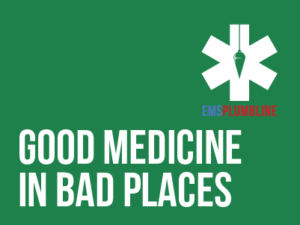
Course Description
Final Exam: Please read each question carefully. You will have two attempts to gain a 70% or higher on this exam. If you are not successful in two attempts, you are welcome to take the course again to gain the certification.
Take Lesson Now
Brick by Brick: Difficult Deliveries

Course Description
Assisting a mother with a complicated childbirth is one of the most challenging situations an EMS provider may encounter in their career. Our team of experts discuss the prehospital management of postpartum hemorrhage, prolapsed cord, shoulder dystocia, and breech birth. Doctors Kristen E. Burhans, Maia Dorsett, and Kara Louise LaBarge demonstrate skills that you will want to practice with your response team before your next obstetrical emergency occurs.
Take Lesson Now
Lifting and Moving—Lesson 2

Course Description
In the second session, we will discuss body mechanics and what you can do to properly train to perform in a safe manner. Final Exam: This multiple choice exam is designed to test your knowledge of the material you just reviewed. You have two attempts to gain an 80% or higher on this exam. Please take your time and answer each question carefully.
Take Lesson Now
Children with Special Health Care Needs: Assessments Part I

Course Description
This is the first lesson in a series that offers two opportunities. You have the opportunity to learn from a medical professional and the opportunity to learn from an experienced and caring mother. Listen carefully in this first lesson and consider what should be done for all medically fragile children. Final Exam: This multiple-choice exam is designed to test your knowledge of the material you just reviewed. You have two attempts to gain an 70% or higher on this exam. Please take your time and answer each question carefully.
Take Lesson Now
Brick by Brick: Gastroenterology Overview—Part 2

Course Description
Melodie Kolmetz, Paramedic, PA-C, is a multi-disciplinary provider and educator. Her lesson continues with an overview on completing a physical exam. Melodie’s experience as a paramedic, physician assistant, and instructor offers an opportunity to learn from one of the best in the industry.
Final Exam: Please read each question carefully. You will have two attempts to gain a 70% or higher on this exam. If you are not successful in two attempts, you are welcome to take the course again to gain the certification.
Take Lesson Now
VAD Educational Updates for the Prehospital Care Provider
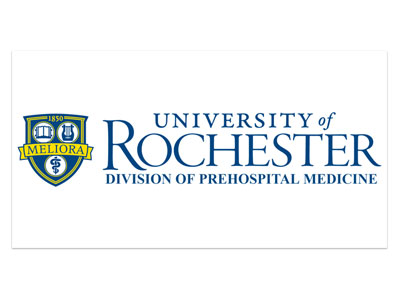
Course Description
Ventricular Assist Devices (VADs) are not new devices. In fact, the first successful use of such a device was described in 1966. Since then, and particularly in the past few years, VAD design and safety has improved significantly and are now commonly implanted devices.
This course strives to bring prehospital providers current with the most commonly implanted devices at the time – this course will not cover every device that a prehospital provider may encounter.
Following successful completion of the material, the provider should feel comfortable recognizing the VAD patient when encountered in the community, have an understanding of the basic VAD components, be able to assess the VAD patient’s hemodynamic status, and be able to deliver care in the prehospital setting.
Take Lesson Now
Introduction to RSI Part 1—Pharmacology Overview
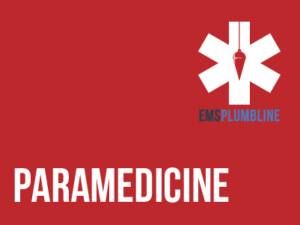
Course Description
This course has been designed for the paramedic who is entering a Rapid Sequence Induction (RSI) course for the first time, or the RSI student who needs a brief review. Nicole M. Acquisto, Doctor of Pharmacy, does a fantastic job of summarizing medication concerns with each phase of the process. Final Exam: This multiple-choice exam is designed to test your knowledge of the material you just reviewed. You have two attempts to gain an 80% or higher on this exam. Please take your time and answer each question carefully.
Take Lesson Now
Technical Rescue—EMS Considerations: Part 1

Course Description
Final Exam: This multiple choice exam is designed to test your knowledge of the material you just reviewed. You have two attempts to gain an 80% or higher on this exam. Please take your time and answer each question carefully.
Take Lesson Now
Constructing: Sepsis for Paramedics, Part 1—Overview

Course Description
Paramedic Michael Hoskins does a fantastic job discussing the gradual onset of this disease process with Medical Directors Jeremy Cushman and Christopher Galton. In this first of three segments, you will learn how we should look for sepsis and what questions every paramedic should ask. Final Exam: This multiple choice exam is designed to test your knowledge of the material you just reviewed. You have two attempts to gain an 80% or higher on this exam. Please take your time and answer each question carefully.
Take Lesson Now
Constructing: Airway Essentials Part 1
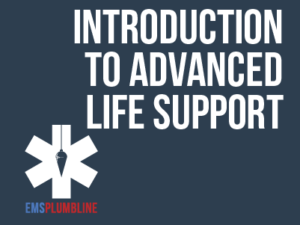
Course Description
We think that you will appreciate the opportunity to review the essential aspects of Airway Assessment and Management with one of the most dedicated paramedics that you can find: Chris Galton. As a Transplant Anesthesiologist and a Paramedic, Galton has spent countless hours learning to assess and maintain some of the most difficult patient airways out there. Instead of going to bed after staying up all night on a liver transplant case, Galton showed some paramedic-style grit and shared some knowledge with Rachel and Rich (two experienced paramedics). The cameras were rolling and you will want to see what they spoke about.
Take Lesson Now
Brick by Brick: Gastroenterology Overview—Part 1

Course Description
In most EMS systems, gastroenterology education is avoided at the BLS level. However, prehospital providers frequently respond to reports of nausea, abdominal discomfort, or pain. There is often a disparity in the relationship between the frequency of responses and the amount of education available to EMS providers.
Melodie Kolmetz, Paramedic, PA-C, is a multi-disciplinary provider and educator. She brings her experience as a paramedic, physician assistant, and university professor to this prerequisite course. Her review of the anatomy and physiology of the gastrointestinal and genitourinary tracts offers a better understanding of how to identify life-threatening emergencies. The end result will be better choices when determining the appropriate prehospital interventions and the nearest appropriate transport destination.
Final Exam: Please read each question carefully. You will have two attempts to gain a 70% or higher on this exam. If you are not successful in two attempts, you are welcome to take the course again to gain the certification.
Take Lesson Now
Constructing: FAST-ED Overview
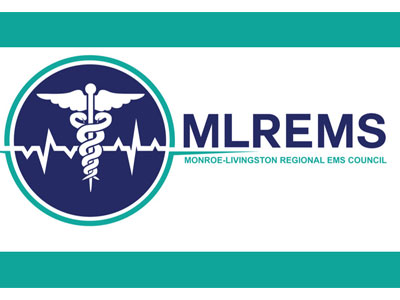
Course Description
Professor of Emergency Medicine and Chief of the Division of Prehospital Medicine at the University of Rochester, Jeremy Cushman, brings his experienced team of prehospital providers together to discuss the benefits of Field Assessment Stroke Triage for Emergency Destination (FAST-ED). You will want to take notes and download your favorite smartphone app. This lesson is sure to spark an excellent discussion with your training officers and/or medical director(s).
Final Exam: This multiple choice exam is designed to test your knowledge of the material you just reviewed. You have two attempts to gain an 80% or higher on this exam. Please utilize the smartphone app of your choosing and take your time and answer each question carefully.
Take Lesson Now
Technical Rescue—EMS Considerations: Part 1

Course Description
Final Exam: This multiple choice exam is designed to test your knowledge of the material you just reviewed. You have two attempts to gain an 80% or higher on this exam. Please take your time and answer each question carefully.
